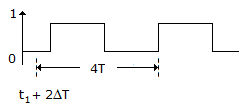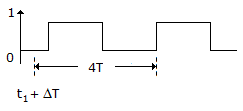Electronics and Communication Engineering - Exam Questions Papers
Exercise : Exam Questions Papers - Exam Paper 11
- Exam Questions Papers - Exam Paper 12
- Exam Questions Papers - Exam Paper 22
- Exam Questions Papers - Exam Paper 21
- Exam Questions Papers - Exam Paper 20
- Exam Questions Papers - Exam Paper 19
- Exam Questions Papers - Exam Paper 18
- Exam Questions Papers - Exam Paper 17
- Exam Questions Papers - Exam Paper 16
- Exam Questions Papers - Exam Paper 15
- Exam Questions Papers - Exam Paper 14
- Exam Questions Papers - Exam Paper 13
- Exam Questions Papers - Exam Paper 1
- Exam Questions Papers - Exam Paper 11
- Exam Questions Papers - Exam Paper 10
- Exam Questions Papers - Exam Paper 9
- Exam Questions Papers - Exam Paper 8
- Exam Questions Papers - Exam Paper 7
- Exam Questions Papers - Exam Paper 6
- Exam Questions Papers - Exam Paper 5
- Exam Questions Papers - Exam Paper 4
- Exam Questions Papers - Exam Paper 3
- Exam Questions Papers - Exam Paper 2
41.
The switching expression corresponding to :
f(A, B, C, D)= ∑(0, 3, 4, 7, 8) + (10, 11, 12, 14, 15) is:
(10, 11, 12, 14, 15) is:
f(A, B, C, D)= ∑(0, 3, 4, 7, 8) +
 (10, 11, 12, 14, 15) is:
(10, 11, 12, 14, 15) is:Answer: Option
Explanation:
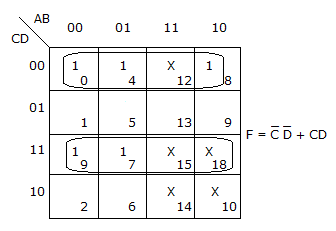
42.
For each of the positive edge-triggered J-K flip flop used in the following figure, the propagation delay is ΔT
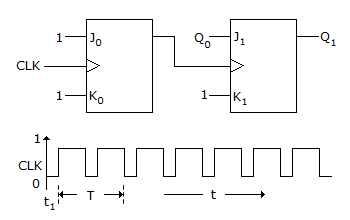
Which of the following waveforms correctly represents the output at Q1?

Which of the following waveforms correctly represents the output at Q1?
Answer: Option
Explanation:
Two JK flip flop. Thus propagation delay will be 2ΔT
Frequency is getting reduced by a factor e.
43.
Given the function F(A, B, C, D) =  m(0, 1, 2, 3, 4, 6, 8, 9, 10, 11, 12). The minimized form of the function can be given by :
m(0, 1, 2, 3, 4, 6, 8, 9, 10, 11, 12). The minimized form of the function can be given by :
 m(0, 1, 2, 3, 4, 6, 8, 9, 10, 11, 12). The minimized form of the function can be given by :
m(0, 1, 2, 3, 4, 6, 8, 9, 10, 11, 12). The minimized form of the function can be given by :Answer: Option
Explanation:
Given S(A, B, C, D) =  m(0, 1, 2, 3, 4, 6, 8, 9, 10, 11, 12)
m(0, 1, 2, 3, 4, 6, 8, 9, 10, 11, 12)
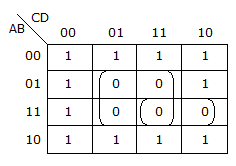
S = (B + D)(A + B + C) .
44.
For the network shown, determine z1 , z0 and Av
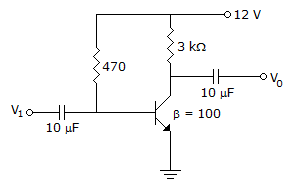

Answer: Option
Explanation:
 = 24.04 μA
= 24.04 μA
IE = (1 + β)IB = 2.428 mA;
 = 10.7 Ω
= 10.7 Ω
(i) zi = RB||Bre = 
= 0.937 K = 1.067 K
(ii) Z0 = RC = 3 kΩ
(iii)  = -280.37
= -280.37
∴ Zi = 1.067 KΩ;
Z0 = 3 KΩ;
Av = -280.37 .
45.
A germanium diode has a reverse saturation current of 30 μA at 125°C and forward current of 1 mA at a forward potential of 0.8 V and the reverse potential is 0.6 V What are its dynamic forward and reverse resistance at this temperature.
Answer: Option
Explanation:
We have,
I = I0•(eV/nVT -1)
∴ 
For forward voltage greater than few teeth's of volts, I >> I0
∴ 
∴ Forward dynamic resistance,

= 34.3 Ω
Reverse dynamic resistance =  = 20 kΩ.
= 20 kΩ.
Quick links
Quantitative Aptitude
Verbal (English)
Reasoning
Programming
Interview
Placement Papers

